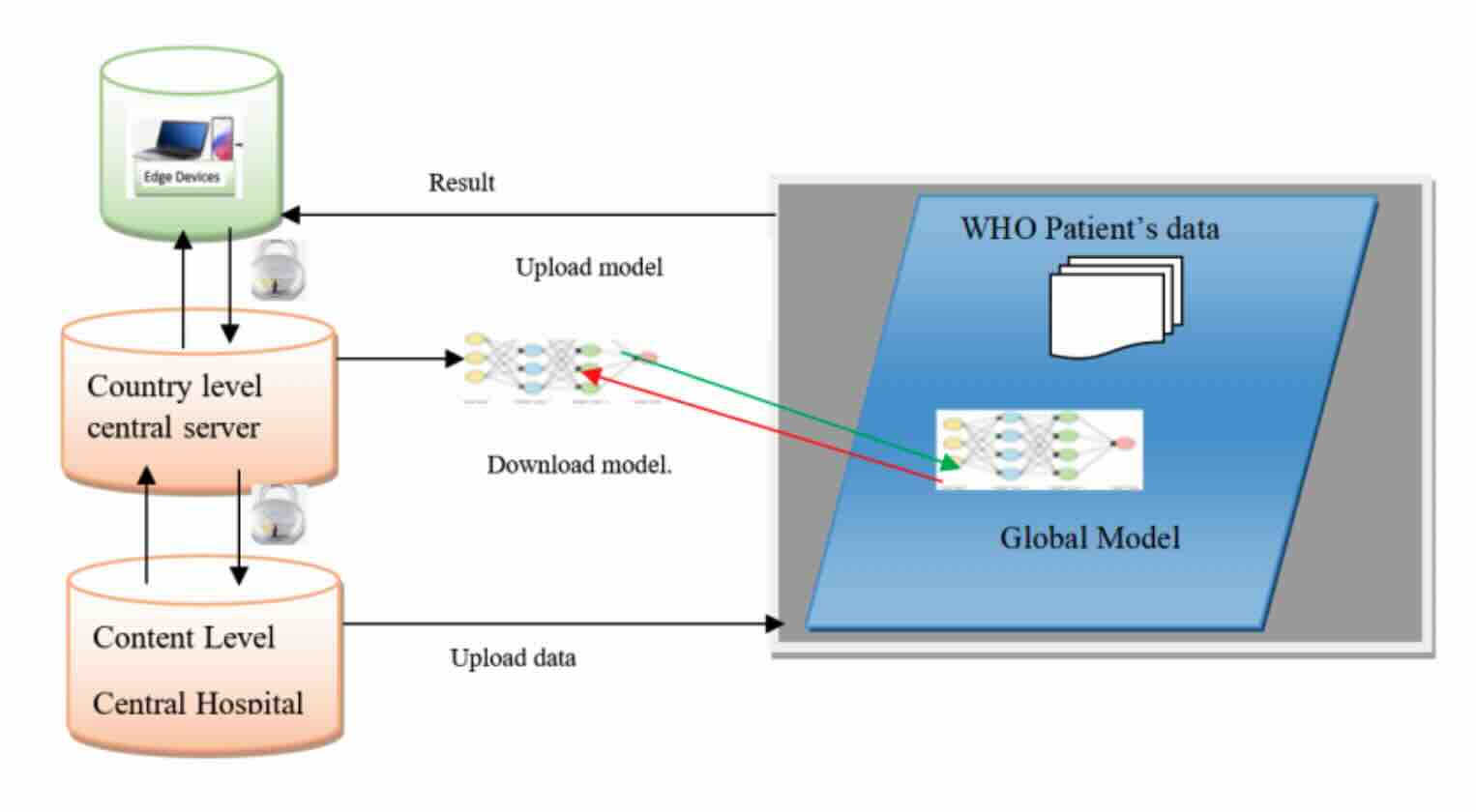Federated Learning for Bronchus Cancer Detection Using Tiny Machine Learning Edge Devices
DOI:
https://doi.org/10.56705/ijodas.v5i1.116Keywords:
Artificial Intelligence, Federated Learning, TinyML, Edge Device, Internet of ThingsAbstract
In deep learning, acquiring sufficient data is crucial for making informed decisions. However, due to concerns regarding security and privacy, obtaining enough data for training models in the era of deep learning is challenging. There is a growing need for machine learning (ML) solutions that can derive accurate conclusions from small data while preserving privacy. Smartphones, which are widely used and generate large amounts of data, can serve as an excellent source for data generation. One suitable approach for regularly evaluating real-world data from edge devices is Tiny Machine Learning (TinyML). With the increasing number of edge devices involved in transmitting private data, it's vital to have a method that allows computations to be performed on edge devices and pushed to the edge rather than over the network. Considering these obstacles, the combination of TinyML edge devices and Federated Learning can be applied in the early treatment of Bronchus Cancer. Under the framework of federated learning, local edge devices are trained independently and then integrated into the server without exchanging edge device data. This approach enables the creation of secure models without sharing information, resulting in a highly efficient solution with enhanced data security and accessibility. This article provides a comprehensive discussion of the key challenges addressed in recent literature, accompanied by an extensive examination of relevant studies. Additionally, a novel model based on edge devices and federated learning is proposed.
Downloads
References
L. Liu, Y. Y. Tsui, and M. Mandal, “Skin lesion segmentation using deep learning with auxiliary task,” Journal of Imaging. mdpi.com, 2021, doi: 10.3390/jimaging7040067.
P. Rajpurkar et al., “CheXNet: radiologist-level pneumonia detection on chest X-rays with deep learning. arXiv archivePrefix.” 2017, doi: 10.48550/arXiv.1711.05225.
S. Warnat-Herresthal, H. Schultze, K. L. Shastry, and ..., “Swarm learning for decentralized and confidential clinical machine learning,” Nature. nature.com, 2021, doi: 10.1038/s41586-021-03583-3.
M. J. Sheller, B. Edwards, G. A. Reina, J. Martin, S. Pati, and ..., “Federated learning in medicine: facilitating multi-institutional collaborations without sharing patient data,” Scientific reports. nature.com, 2020, doi: 10.1038/s41598-020-69250-1.
G. Kaissis, A. Ziller, J. Passerat-Palmbach, and ..., “End-to-end privacy preserving deep learning on multi-institutional medical imaging,” Nature Machine …. nature.com, 2021, doi: 10.1038/s42256-021-00337-8.
G. A. Kaissis, M. R. Makowski, D. Rückert, and ..., “Secure, privacy-preserving and federated machine learning in medical imaging,” Nature Machine …. nature.com, 2020, doi: 10.1038/s42256-020-0186-1.
D. C. Nguyen et al., “Federated Learning for Industrial Internet of Things in Future Industries,” IEEE Wirel. Commun., vol. 28, no. 6, pp. 192–199, Dec. 2021, doi: 10.1109/MWC.001.2100102.
M. D. Genemo, “Suspicious activity recognition for monitoring cheating in exams,” Proc. Indian Natl. Sci. Acad., vol. 88, no. 1, pp. 1–10, Mar. 2022, doi: 10.1007/s43538-022-00069-2.
Q. Yang, Y. Liu, T. Chen, and Y. Tong, “Federated machine learning: Concept and applications,” ACM Trans. Intell. …, 2019, doi: 10.1145/3298981.
D. C. Nguyen, M. Ding, P. N. Pathirana, A. Seneviratne, J. Li, and H. Vincent Poor, “Federated Learning for Internet of Things: A Comprehensive Survey,” IEEE Commun. Surv. Tutorials, vol. 23, no. 3, pp. 1622–1658, 2021, doi: 10.1109/COMST.2021.3075439.
V. Mothukuri, R. M. Parizi, S. Pouriyeh, Y. Huang, A. Dehghantanha, and G. Srivastava, “A survey on security and privacy of federated learning,” Futur. Gener. Comput. Syst., vol. 115, pp. 619–640, Feb. 2021, doi: 10.1016/j.future.2020.10.007.
G. Shrestha, Deepsikha, M. Das, and N. Dey, “Plant Disease Detection Using CNN,” in 2020 IEEE Applied Signal Processing Conference (ASPCON), Oct. 2020, pp. 109–113, doi: 10.1109/ASPCON49795.2020.9276722.

Downloads
Published
Issue
Section
License
Authors retain copyright and full publishing rights to their articles. Upon acceptance, authors grant Indonesian Journal of Data and Science a non-exclusive license to publish the work and to identify itself as the original publisher.
Self-archiving. Authors may deposit the submitted version, accepted manuscript, and version of record in institutional or subject repositories, with citation to the published article and a link to the version of record on the journal website.
Commercial permissions. Uses intended for commercial advantage or monetary compensation are not permitted under CC BY-NC 4.0. For permissions, contact the editorial office at ijodas.journal@gmail.com.
Legacy notice. Some earlier PDFs may display “Copyright © [Journal Name]” or only a CC BY-NC logo without the full license text. To ensure clarity, the authors maintain copyright, and all articles are distributed under CC BY-NC 4.0. Where any discrepancy exists, this policy and the article landing-page license statement prevail.














